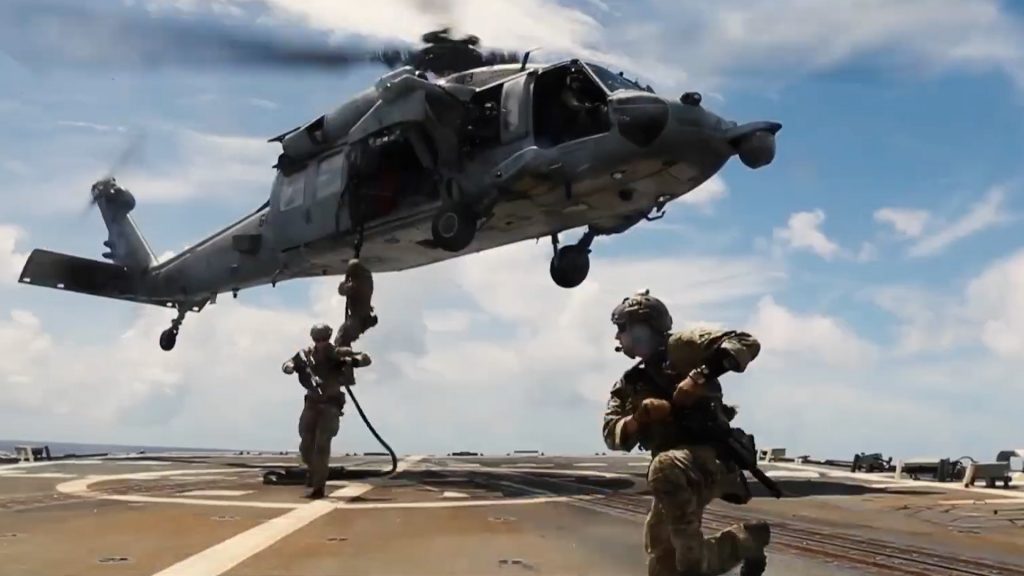Marine modernization keeps a foot on the gas, sees progress and challenges

The United States Marine Corps, like its fellow service branches, embarked on a significant modernization initiative, launched as Force Design in 2019. This effort aimed to prepare for future conflicts, particularly in the Indo-Pacific region. The goal was to transform the Marine Corps into a lighter, more agile and technologically advanced force capable of operating effectively in challenging environments.
Nearly six years into the initiative, the Marine Corps has made some progress. Gen. Eric Smith, the commandant of the Marine Corps, and Adm. James Kilby, the acting chief of naval operations, provided a look at where the initiative is now during a recent session.
Gen. Eric Smith and updating the playbook
Smith, the 39th commandant of the Marine Corps, emphasized the importance of modernization for the future of the Marines. In a 30-minute session that began with a keynote speech and transitioned to a Q&A segment, Smith covered a wide range of priorities for the branch. He highlighted the “Barracks 2030” initiative, a $5 billion, five-year plan to upgrade facilities, and the role of autonomous systems in future operations. Smith underscored the opportunities available for the more than 200,000 Marines serving on active duty and in the reserves.
“Every generation of Marines has added a new page to the playbook, and now it is our turn,” Smith said. “Force Design, stand-in forces, long-range precision fires, maritime denial and control from the shore. These are not experiments. They are our contribution to the next fight, and like every year before us, they are built on lessons learned by Marines in conflict.”
One specific priority for Smith is returning to a 3.0 ARG/MEU, which stands for Amphibious Ready Group/Marine Expeditionary Unit. Smith described ARG/MEUs as versatile and flexible, likening them to Swiss Army knives.
“The 3.0 is our North Star,” Smith said. “A MEU embarked on a three-ship Amphibious Ready Group is the most versatile, flexible and lethal global response force the United States has to offer. It does not require access, basing and overflight. It gives the nation’s leaders options. We can park ourselves 12 miles off anybody’s coast and stay there for as long as we please.”
Remaining challenges
However, Smith acknowledged that the 3.0 is more aspirational than actionable at present, due to a lack of amphibious warships.
“We do not have enough that are ready,” Smith said. “We are working with the Navy to fix that. But I need you to understand this is about more than ships. It is about deterrence and denial. It is about making sure Marines are in position when the next fight comes.”
Smith addressed various issues facing his branch, from Force Design to recruiting and retention. While he acknowledged that there are no sure paths or easy answers, he remained optimistic about the result.
“This is going to take time,” Smith said. “We are going to do it the right way, not the fast way, just like Marines always do. So yes, the tools are changing. The formations are changing. The fight itself is changing. But what never changes is who we are. We are Marines. We are a war-fighting organization, disciplined, lethal and ready.”
Adm. James Kilby and priorities
Approximately 90 minutes after Gen. Smith concluded, Adm. James Kilby, the acting chief of naval operations, took the stage. Kilby covered a wide range of topics, emphasizing major themes such as the Navy’s focus on sea control and the shift from a more relaxed environment to one that is much more contested.
“That means I have to have control of that sea space, all domains, from air, space, surface, subsurface, to conduct from that sanctuary for however long I need it, those effects I need to bring to shore,” Kilby said. “So it is not like we are getting away from power projection, but we are emphasizing sea control and buying the kit and capability in concert with the Marine Corps to achieve that level of sanctuary, to conduct that power projection.”
Kilby outlined seven priorities to focus on by 2027:
- Ensuring that America’s maritime forces are at 80% combat surge readiness.
- Adapting to the use of autonomous systems.
- Enhancing maritime operations centers.
- Improving recruitment.
- Upgrading quality of life.
- Building up warfighter skills.
- Restoring the Navy’s infrastructure.
Kilby also addressed the challenges the Navy and Marines face with maintaining amphibious ships and the need to improve their availability rates.
“I owe you a three-ship ARG that is ready to embark Marines and conduct a training cycle and deploy on schedule,” Kilby said. “I did not meet that requirement with the Boxer ARG or the Wasp ARG, and I am focused on meeting that requirement to make sure we move forward.”
What are the priorities?
Although Kilby did not echo the thoughts of former Secretary of the Air Force Frank Kendall, who famously emphasized the threat posed by China, he did stress the importance of integrating Marine Corps capabilities into Navy operations, especially in the western Pacific.
“We are responding to a call from our adversary, China, who said, ‘We want to be ready in 2027.’ Therefore, the United States Navy, and I would argue, our military, must be ready in 2027 across all our platforms to bring those effects to bear,” Kilby said.
To conclude, Kilby highlighted the crucial need for the Navy and Marine Corps to continue working together.
“How do we support the Marine Corps when they want to demonstrate the ability and to show the advantage of an expeditionary advanced base that I can get up and move and reposition and bring those effects to bear?” Kilby asked. “That is work I think we need to do together.”
Kilby added that the Marine Corps and Navy have collaborated for 250 years and owe it to the country to continue working side by side.
Access the full Weapons and Warfare episode here.
Access all Weapons and Warfare podcast episodes here.





